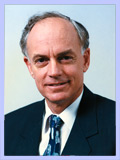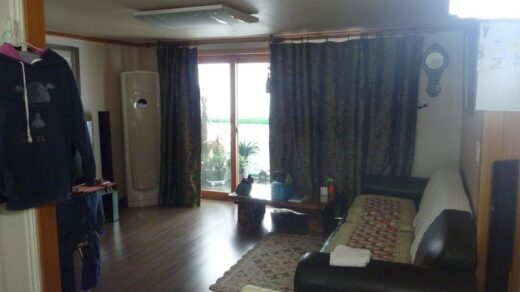
When Korea Business Central asked Dick Warmington to do an interview for us, we just expected that he’d have great insights about Chadwick International School, Korean education and Songdo city. We didn’t realize he’d also previously run the operations of Hewlett-Packard in Korea during the late 80s and early 90s, and then HP’s entire Asia Pacific operations through the Asian IMF Crisis of the late 1990s. We also didn’t realize that Chadwick School breaks the mold for international schools by mostly educating Koreans AND bringing a new, pioneering model to education in Korea. One also can’t help but get a little more excited about Songdo after listening to Dick gush about its uniquenesses.
This interview is inspirational as well as enlightening… It covers lots of ground as Dick shares insight after insight about Korea, Korean education and Korean business.
Click here [EXPIRED LINK REMOVED: https://stevenbammel.com/category/archives/kbcforum/topics/korea-business-central-329] to listen to the interview, download the .mp3, subscribe in iTunes, read the transcript and or discuss this interview and this topic with other members of Korea Business Central visit the English-language discussion link.
Click here for the full list of interviews in the Korea Business Interview Series.
Main Points of the Interview
Topic #1 – Background to Joining Chadwick International in Songdo
- Dick graduated from Chadwick School in Los Angeles fifty years ago, before going on to study at Stanford and Harvard. He joined Hewlett-Packard, spending 33 years with the company.
- Under Dick’s leadership, HP established a joint venture in Korea with Samsung Electronics. In 1997, HP bought out Samsung’s share and now owns 100% of HP Korea. Later, Dick finished his career in Hong Kong as CEO of HP’s Asia Pacific operations, guiding the company through the Asian Financial Crisis of 1997.
- During retirement, Chadwick approached Dick to run their new branch school in Songdo, which he joined in early 2010. This was a perfect match for Dick thanks to his background in Korea and Asia, as well as a long-term interest in independent education, including the fact that his two children are Korean adoptees.
Topic #2 – Setting the School Up in Songdo
- Songdo is a new, architected city, the center of which is being developed by Gale International, a private US-based corporation. It was started around 2000, very close to Incheon Airport. Songdo is also an economic free zone for drawing foreign direct investment into the area and an international school was a prerequisite for attracting international families.
- Setting up a school in Korea requires close work and licensing from the Korea Ministry of Education, Science and Technology. This process was more complicated than expected, meaning that the school opened about five months later than planned.
- Chadwick International in Songdo currently offers grades K-7, with 280 students and 40 international educators. The official opening was September 10, 2010, and most students are ethnic Koreans.
- The Songdo school is a branch of the K-12 Chadwick School in Palos Verdes, California, which has enrollment of about 850 students and which has a 75-year history.
- Support from the city of Incheon, which is the larger metrolitan area under which Songdo city is chartered, continued smoothly even when the mayor who had previously championed the city lost in the 2010 elections and was replaced by a new mayor from the opposition party.
Topic #3 – Education at Chadwick and Korea At Large
- Koreans put a lot of emphasis on education and this comes from the Confucian background where education is fundamental to success. It is traditionally a rote-based system and objective testing is the means through which universities admit their students.
- Chadwick, on the other hand, focuses on teaching critical thinking and creative thought processes. The program is experiential-based and rather than lecturing; teachers are facilitators. There is a lot of group work. Chadwick is using the International Baccalaureate program structure to deliver the subjects, and technology is heavily incorporated into the learning, with every student from the first grade required to have and use a computer.
- The school hopes to be an example in Korea of alternative ways of approaching education and a lot of effort goes into educating families on this progressive approach. The kids enjoy their education and it’s sometimes hard to persuade Korean parents that this is a good thing and will lead to them to become lifelong learners.
- Because English is not the first language of most students in the current Chadwick International student body, the school is having to put an extra effort into bringing up their English skills, and computers are an integral part of this process. Things are still a work-in-progess, though.
- Within the traditional Korean school system, class sizes of 30-40 are about average and after-school learning in private “hagwons” is prevalent. This means kids often study all day and then all afternoon and into the evening in order to cram as much learning in as possible, stunting their social skills, creative skillsand critical thinking skills development.
- In fact, up to 25,000-30,000 Korean families have moved to other countries, such as Southeast Asia, the US, Canada, Australia and other places to give their children alternative learning environments.
- Because of these realities in the Korean school system and the difficulties in changing them, the Korean government has been active in attracting international schools, such as Chadwick, into the local market.
- Chadwick is engaged in sharing about its approaches within Korea, including ongoing communications with the Ministry of Education and the filming of documentaries about the education being delivered.
Topic #4 – About HP Korea and Korean Business
- Setting up the HP subsidiary in Korea was a fascinating experience for Dick as HP was trying to introduce a Socratic Western business culture into a Confusion-based society. For example, in the Confucian structure mistakes are punished; in the HP approach, if you don’t make mistakes, you’re not doing your job. In a typical Korean company, decisions don’t get made at low levels but in HP, employees get a lot of authority in their jobs.
- Samsung was uncomfortable with the chaos in the HP Korea workplace, but HP was also their most profitable, fastest growing operation at the time and they learned a lot. HP started with 130 employees from Samsung Electronics when forming the company and when given the opportunity to return to Samsung after five years, not one person returned.
- Success comes from getting agreement on objectives, but how those objectives are accomplished can vary. This lesson is serving Dick well in his current position at Chadwick, too.
- In 1997, with the Asian Financial Crisis, HP top management saw the potential in the market and made the company’s heaviest investments in Korea. HP bought a building, bought out the shares from Samsung and made other investments totally close to $300 million in 1997.
Topic #5 – Korean Challenges for the Future
- Challenge #1 for Korea is the low birthrate of just 1.12 children per family. Overcoming the issue of a declining population will be difficult.
- From a business perspective, another challenge is finding ways to support the growth of smaller companies. This is necessary for maintaining a good, healthy growth rate in the country.
- And moving the education from traditional approaches to a more experiential-based method is a third major challenge for Korea going forward.
Topic #5 – Songdo City
- The city is currently about one third built out and is still following its original architected plan drawn up in the early 2000s. Total area is about 1,500 acres, with 85,000 people expected to move in eventually. Avenues are wide; parking is underground. The city is built on filled-in wetlands. Buildings are modern; lots of glass. The city is built to environmentally-friendly standards, including areas like transportation, trash, sewage and materials used. Communication and transportation are integrated. POSCO Engineering & Construction’s new headquarters, which is being built in Songdo, will be Korea’s tallest building. The city is safe, people ride bikes and the air is clean. Getting to Seoul takes about 45 minutes. There is even a Jack Nicklaus golf course built here.
Topic #6 – Winding Up
- The top goal for Chadwick over the next 5-10 years is to graduate the first class in 2015 with the same characterstics as the school’s students graduating from Chadwick in Palos Verdes. The school is also striving to get parents to truly appreciate what their kids are getting at Chadwick.
- To understand Songdo, visit Songdo. This “aerotropolis” will serve as an example to city developers in the future



